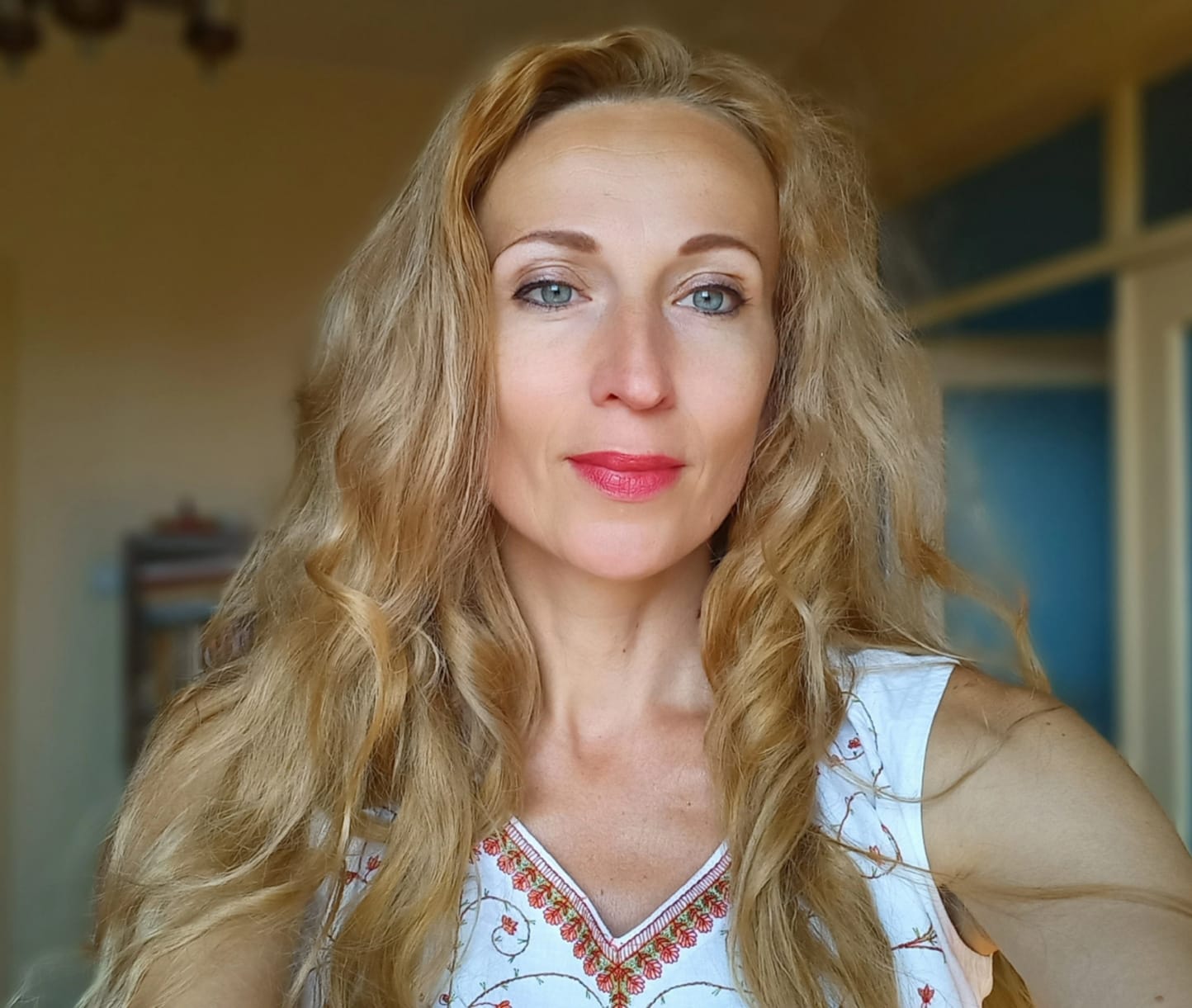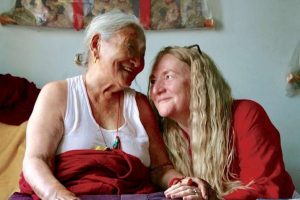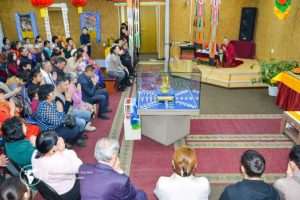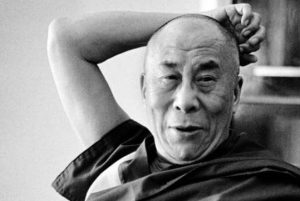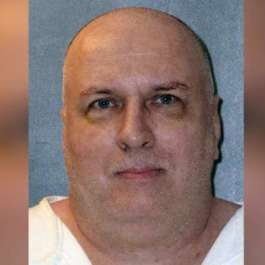
In his foreword to the book Three Lives in One Lifetime: An Interview with Kirti Rinpoche Lobsang Tenzin Jigme Yeshe Gyatso (2020), His Holiness the Dalai Lama writes:
When I meet Tibetan elders living in exile, I often encourage them to write down their life stories. Their experiences are all a part of the Tibetan people’s fate, and writing them down gives us and our future generations a deeper understanding of our people’s history.
The book was written by Jianglin Li (1956–2024),* an independent scholar and renowned writer specializing in post-1950 Tibetan history and the Tibetan diaspora. It was published in Chinese by Ganjong Publication under the Office of Tibet, Taiwan, as well as in English and Tibetan by the Library of Tibetan Works and Archives. The translator from Tibetan to English and editor of the book is Matthew Akester, an independent researcher and translator specializing in Tibetan history.
Three Lives in One Lifetime recounts the extraordinary life story of His Eminence Kirti Rinpoche, the head lama of Kirti Monastery (Tib: ཀི་རྟི་དགོན་པ།), in what is now China’s Sichuan Province, and its 40 affiliated monasteries in Tibet and India. Kirti Rinpoche has devoted his life to the revival and flourishing of the Gelug school of Tibetan Buddhism, as well as serving the Central Tibetan Administration (Tib: བོད་མིའི་སྒྲིག་འཛུགས།), the Tibetan government-in-exile based in Dharamsala, India. An esteemed scholar and prolific writer, Kirti Rinpoche serves as the root guru, or tsawei lama (Tib: རྩ་བའི་བླ་མ།), to countless Tibetans within Tibet and in the diaspora.
In his foreword to the book, the Dalai Lama reflects on the extraordinary journey of Kirti Rinpoche’s life as a distinguished Tibetan elder living in exile:
Kirti Rinpoche not only has a good understanding of religion, culture and everyday life in Tibet before the arrival of the Chinese Communists, he witnessed the Communist invasion, “democratic reform”, the suppression of the Tibetan people, and the flight into exile. He has not only seen Tibetans in exile nurture their religion and culture in a foreign country, maintain their national identity, and develop a democratic political system and society, but participated in it himself.
I had the privilege of meeting Kirti Rinpoche at his monastery in Dharamsala in 2017 and again in Bodh Gaya during the Great Prayer Festival (Tib: སྨོན་ལམ་ཆེན་མོ།, Monlam Chenmo), dedicated to the long life of His Holiness the Dalai Lama. The festival was held at Kirtighar Samyeling (Tib: ཀིརྟིའི་སྒར་བསམ་ཡས་གླིང་།) from 7–11 January 2025.** I had the opportunity to interview Konchok Jigme, secretary (Tib: དྲུང་ཡིག) to Kirti Rinpoche, who, despite the demanding schedule during the Monlam Chenmo, kindly shared his insights exclusively for BDG on the noble work of one of the most revered lamas of the Gelug tradition, and his efforts to preserve the rich heritage of the Kirti tradition and Tibetan Buddhism.

BDG: Could you briefly introduce His Eminence Kirti Rinpoche?
Konchok Jigme: The First Kirti Rinpoche, Rongchen Gendun Gyeltsen (1374–1450), was born in Zhaksho, in the Tibetan region of Amdo. He traveled to Lhasa and became the principal disciple of Tsongkhapa Lobsang Drakpa (1357–1419), the founder of the Gelug tradition. Since then, he has reincarnated 10 times, with the current 11th Kirti Rinpoche being Lobsang Tenzin Jigme Yeshe Gyatso.
Born in Thewo Takmoe Gang in Amdo in 1942, the 11th Kirti Rinpoche moved to Lhasa in 1958 to study at Drepung Loseling Monastery (Tib: འབྲས་སྤུངས་བློ་གསལ་གླིང་གྲ་ཚང་།). Following the Chinese invasion of Tibet, he fled into exile in India in 1959. While in exile, he pursued advanced studies in Buddhist philosophy and completed nine years of training at the Central Institute of Higher Tibetan Studies in Varanasi.
In 1992, Kirti Rinpoche founded the Kirti Institute of Higher Tibetan Studies, known as Kirti Jepa Dratsang (Tib: ཀིརྟིའི་བྱེས་པ་གྲྭ་ཚང་།), in Dharamsala. Later, in 1997, he was elected as a minister or kalon (Tib: བཀའ་བློན།) in the Department of Religion and Culture under the Central Tibetan Administration. This ministry oversees the religious and cultural affairs of the Tibetan exile community, ensuring the preservation of their rich heritage.
BDG: What are Kirti Rinpoche’s most significant achievements?
KJ: The achievements of Kirti Rinpoche can be categorized into religious and political spheres. In terms of religious accomplishments, he completed his advanced Buddhist studies in India and established a branch of Kirti Monastery in Dharamsala. Rinpoche nurtured numerous graduated monks, as well as geshes (Tib: དགེ་བཤེས།), who completed Buddhist studies and rigney ramjampa (Tib: རིག་གནས་རབ་འབྱམས་པ།), and completed Tibetan cultural studies from Kirti Jepa Dratsang in India.
Kirti Rinpoche has authored and published more than 100 books on Tibetan religion, making significant contributions to the preservation and dissemination of the monastic education system, as well as monastic rules and regulations. He is also responsible for overseeing many monasteries in Tibet, where numerous young children have taken ordination as monks. For their education, Rinpoche took responsibility as editor for the textbook for the monastic school Losel Gulgyen (Tib: བློ་གསལ་མགུལ་རྒྱལ།), aiming to publish textbooks in India and send them to the monasteries in Tibet. Unfortunately, we were unable to implement the plan due to the influence of the Chinese government. However, we successfully implemented it for monasteries in India and Nepal.
Additionally, Kirti Rinpoche established rules and regulations for monastic discipline and study in India. These guidelines were sent to the Kirti monasteries in Tibet, where most continue to follow Rinpoche’s guidance despite the influence of the Chinese government.
In terms of Kirti Rinpoche’s political achievements, after completing his education in Varanasi, he returned to Dharamsala and worked for 5–6 years with the Dalai Lama Trust (Tib: ཏཱ་ལའི་བླ་མའི་དགེ་རྩ།). He then served six years at the Public Service Commission (Tib: གཞུང་ཞབས་འདེམས་བསྐོ་ལྷན་ཁང་།) of the Central Tibetan Administration. Following that, Kirti Rinpoche became an executive member of the Constitutional Amendment Drafting Committee. He was later elected as a minister in the Department of Religion and Culture.

BDG: What contributions has Kirti Rinpoche made to preserving the Kirti tradition?
KJ: Kirti Rinpoche’s primary goal is to preserve the purity and authenticity of his tradition, keeping it separate from modern influences. This has been his way of thinking. From a very young age, he grew up in a traditional environment, receiving his education in Tibet before moving to India for further studies.
Kirti Rinpoche has always sought to follow the advice of His Holiness the Dalai Lama, emphasizing that the goal of achieving freedom from China is to preserve Tibet’s religion and traditions.
BDG: What does a day in the life of Kirti Rinpoche look like?
KJ: On a regular basis, Kirti Rinpoche begins his day with prayers as soon as he wakes up. After breakfast, around 8 a.m., several dignitaries from Kirti Monastery and the Kirti Getsa Charitable Society (Tib: ཀིརྟིའི་དགེ་རྩ་ཚོགས་པ།), along with Rinpoche’s personal secretary, visit him one by one at his office to receive his instructions and report on the daily work, the situation of monastic studies, and other matters.
After lunch, there may be audiences and he meets with visitors. Following that, he continues his work, signing documents. Later in the day, Rinpoche provides guidance to the computer specialists on various aspects of publishing, book design, and making corrections as needed in his office.

BDG: What is Kirti Rinpoche’s vision for the newly built Kirtighar Samyeling Monastery in Bodh Gaya?
We published a book about the construction of Kirtighar Samyeling and the future plans for the monastic complex. The book was launched at the conclusion of the Monlam Chenmo at Kirtighar Samyeling.
The primary purpose of building Kirtighar Samyeling is the study of Nalanda philosophy. His Holiness the Dalai Lama consistently emphasizes the importance of studying Nalanda philosophy, and Kirti Rinpoche follows this guidance. Rinpoche’s main goal is to establish a primary school alongside an institute for higher Buddhist studies, as well as to create a Samye Ling Tibetan Buddhist Nalanda Academy in Bodh Gaya. This academy will be open to anyone interested in studying Nalanda philosophy. The monastic complex will not only serve Tibetans but also people from the Himalayan region, India, and the West.
In the winter, Kirti Rinpoche will stay at Kirtighar Samyeling in Bodh Gaya, while in the summer, he will reside at the Kirti Jepa Dratsang in Dharamsala.

BDG: In 2001, Kirti Rinpoche wrote the book The Sixty-Year-Old Man’s Hope (Tib: དྲུག་ཅུ་རྒན་པོའི་རེ་འདུན།) as a guide for Kirti Monastery in Tibet. Through this book, he introduced reforms in the monastic education system and regulations. Could you tell us more about these reforms?
KJ: Among the reforms outlined in the book, the most significant concerns the system of khenpo.*** Traditionally in Tibet, only reincarnated lamas or tulku (Tib: སྤྲུལ་སྐུ།) were appointed as khenpo. Kirti Rinpoche introduced a reform allowing anyone who has completed higher Buddhist studies and received the geshe degree to become khenpo. Another key reform concerns the administration of the monasteries. The Chinese authorities have appointed some monks to oversee the administration of the monastery, but Kirti Rinpoche has instructed them on how to cooperate with the Chinese government while managing the entire monastery system. There was also a reform in the monastery kitchen. Previously, sponsors could choose the food and order meat if they wished. However, Kirti Rinpoche advised that the kitchen should serve only vegetarian food, prohibiting the serving of meat. All of these guidelines are repeatedly mentioned in this book.

BDG: The book of Kirti Rinpoche’s life story is titled Three Lives in One Lifetime. Why is that?
KJ: The book discusses three major changes in Kirti Rinpoche’s life. The title of the book is not written in a traditional Tibetan style; it was written by Jianglin Li and reflects her point of view. The first change occurred in his early years. Rinpoche was born into a poor farmer’s family in a remote village. Suddenly, in 1945, he was recognized as the reincarnation of the 10th Kirti Rinpoche, Ngawang Lobsang Tenpa Tsering (1921–41). From being a farmer’s child, he became a highly revered lama, and his life changed completely.
The second change happened in 1958 when he moved to Lhasa to study at Drepung Monastery. In his native Amdo region, he was Kirti Rinpoche and a high lama, but on arriving in Lhasa, he had to undergo the full process of Buddhist studies as an ordinary monk, studying alongside others. Despite being a regular monk at Drepung, the Tibetan government still recognized him as a high lama and granted him a high lama position.
The third change was his journey to India as a refugee. In Dharamsala, where all Tibetans were considered equal, it no longer mattered whether he was a high lama. He had to go to school, work in the kitchen, and cook like everyone else, up to the point of joining the Tibetan government-in-exile. These are the three main changes in his lifetime.
BDG: What needs to be done to preserve Tibetan Buddhism in general, and the Kirti tradition in particular?
KJ: Kirti Rinpoche wants to preserve Tibetan religion and culture as a whole, but he has a specific approach to achieving this goal. He believes that if he can successfully preserve Kirti Monastery and its disciplines, he will be contributing to the preservation of Tibetan tradition as a whole.
I think that preserving Tibetan culture depends on political relations between China and Tibet. In that regard, whenever Western people meet the Chinese authorities, they can engage in a dialogue about preservation of Tibetan identity.
BDG: Thank you very much for sharing your time with us. We wish both Kirti Rinpoche and you good health and great success in your endeavors.
* 2025 He Qinglian: Remembering Tibet Historian Li Jianglin (高大伟 David Cowhig’s Translation Blog)
** Monlam Chenmo Dedicated to the Long Life of the Dalai Lama Held at Kirti Monastery in Bodh Gaya (BDG)
*** Khenpo (Tib: མཁན་པོ།) is a title for higher Buddhist studies in Tibetan Buddhism. In the Gelug tradition, it refers to either a senior monk who ordains new monastics or the abbot of a monastery.
Related features From BDG
The Sound of Awakening: Meeting the Mongolian Yogini Kunze Chimed
Along the Path of the Buddha: Buddhism in Bulgaria
Tuva: Sacred Land of Turkic Shamanism and Tibetan Buddhism




